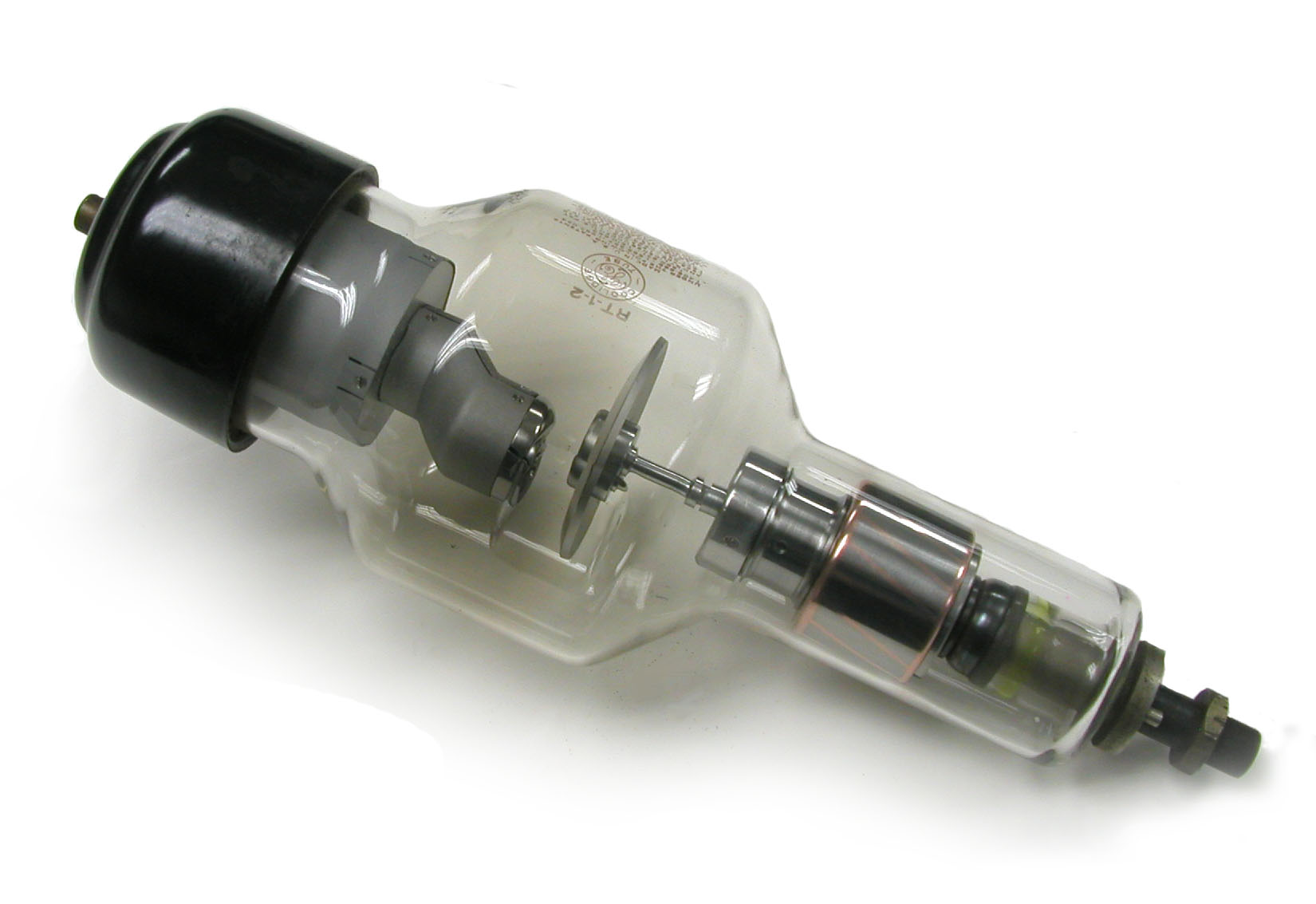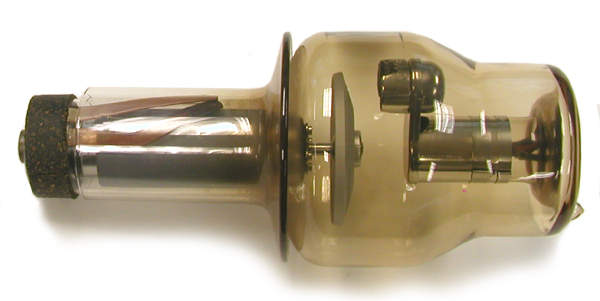Rotating Anode Tubes
During operation, a large disk-shaped tungsten anode is rotated at high speed (3000 to 9000 revolutions per minute). The motive force for the rotation is provided by an induction motor the windings of which are housed outside the tube. Although the focal spot of the electrons impinging on the anode is no larger than that in a tube with a stationary anode, the effective area of the anode exposed to the beam is much larger. By this means, the heating of the anode is reduced and the tube loading can be increased (e.g., up to 500 mA with a 2 mm x 2 mm focal spot).
One of the tricky problems that had to be overcome in building these tubes was how to lubricate the tube's moving components—wet lubricants could not be used because of the vacuum.
According to Richard Mould, the concept of the rotating anode X-ray tube originated with Elihu Thomson in 1896. Others have suggested that it was Robert Wood in 1897. Either way, it was some time before a working model could be constructed. The first practical working version seems to have been described by General Electric's William Coolidge in 1915. Quoting the latter's paper in the December 1915 issue of the American Journal of Roentgenology, the tube had a "target rotation of 750 revolutions per second with the focal spot describing a circle 0.75" (19 mm) in diameter. 2.5 times as much energy for the size of the focal spot is obtained when compared with the stationary target."
Philips of Holland, not General Electric, produced the first commercially available rotating anode tube, the Rotalix. It came out in 1929, and Eureka obtained the license to produce it in the U.S. Soon, General Electric and Machlett came out with their own versions. Still, these early tubes had their problems, and it wasn't until the 1940s that rotating anode tubes finally came into their own. By the 1950s or so they had become the standard tube design for diagnostic work.
References
- Etter, L.E. The Science of Ionizing Radiation. Charles C Thomas. 1965.
- Grigg, E.R. The Trail of the Invisible Light. Charles C Thomas. 1965.
- Mould, R. A Century of X-rays and Radioactivity in Medicine. Institute of Physics Publishing. Bristol. 1993.
-
General Electric RT-1-2 Rotating Anode Tube General Electric RT-1-2 Rotating Anode Tube

-
Machlett FDX 1-2 Rotating Anode Tube Machlett FDX 1-2 Rotating Anode Tube

